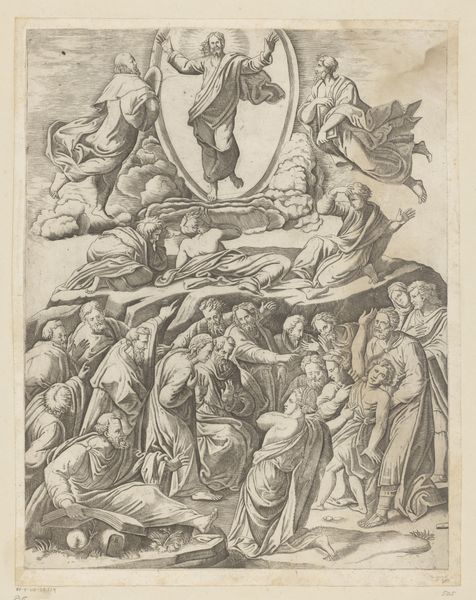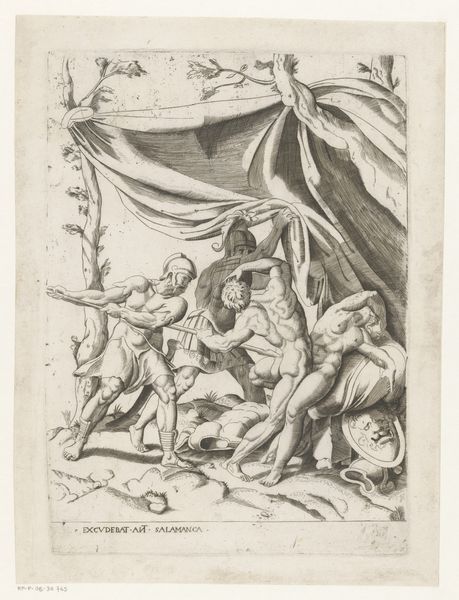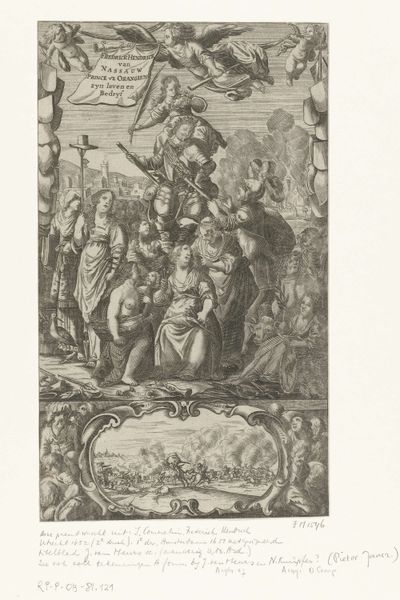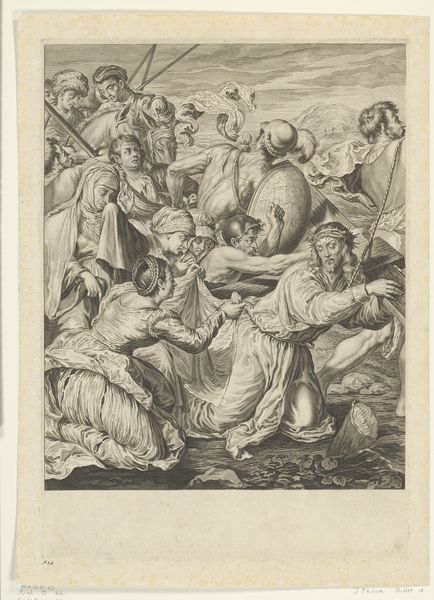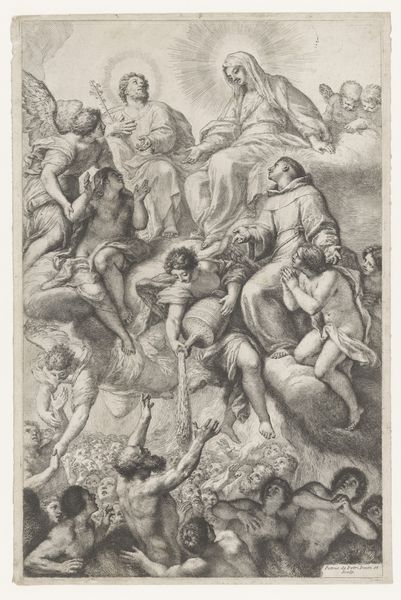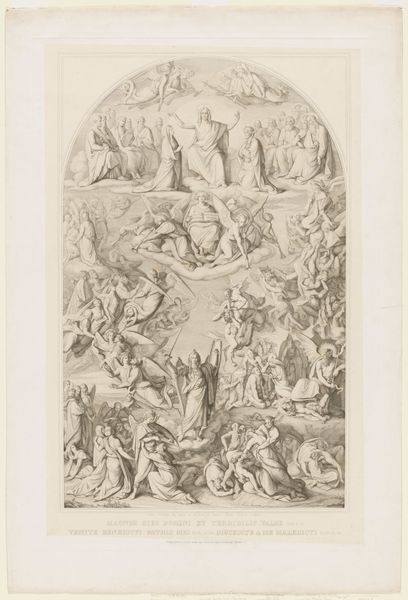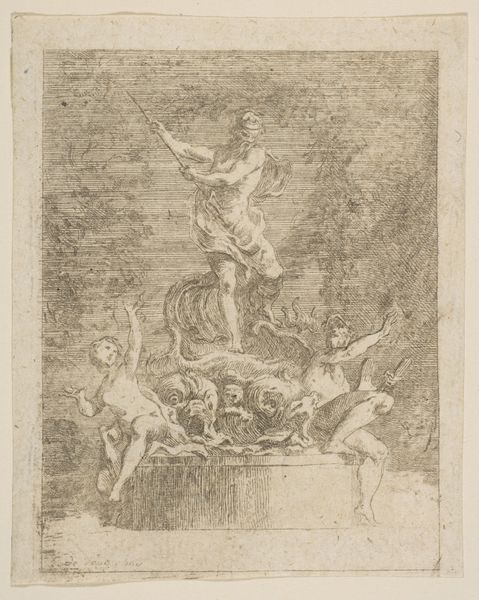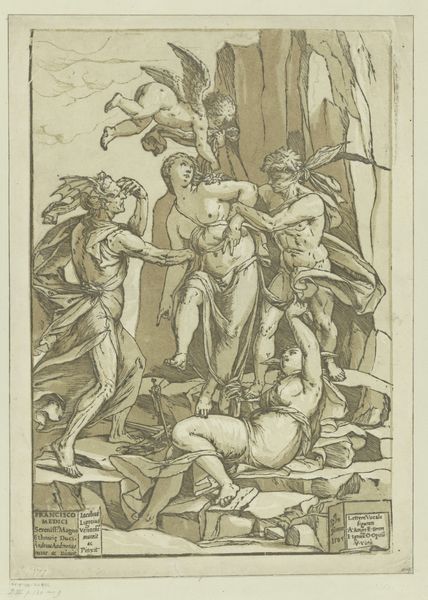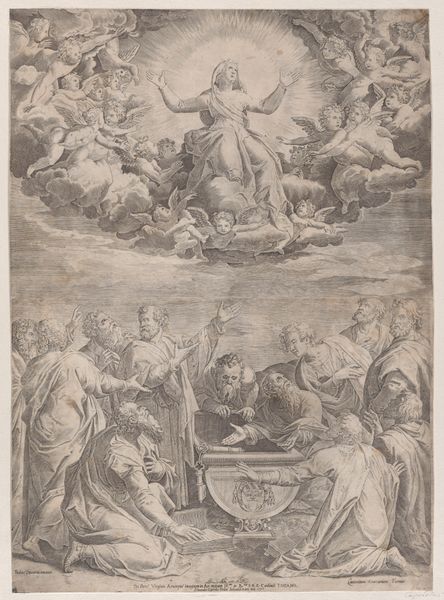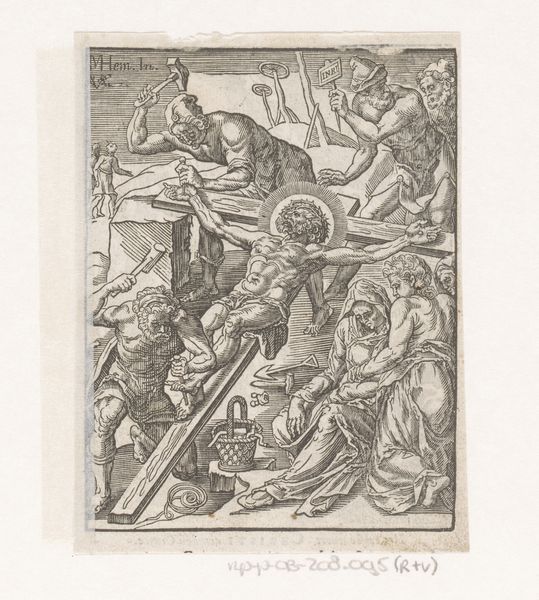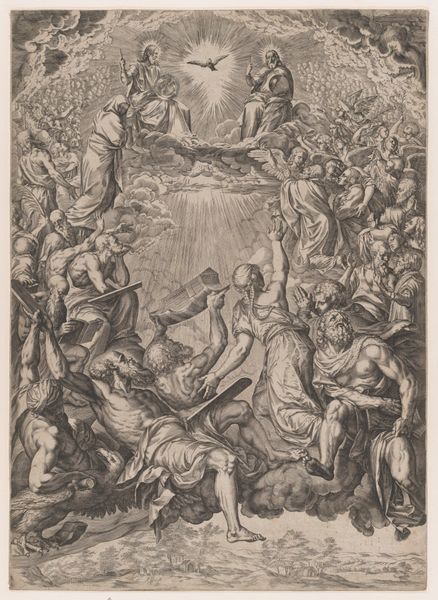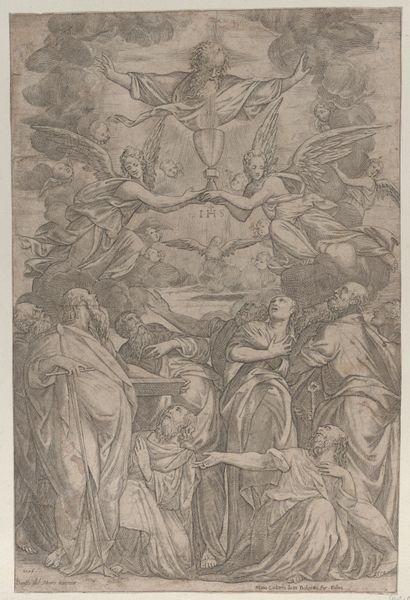
Transfiguratie van Christus op de berg Tabor c. 1530 - 1560
0:00
0:00
meestervandedobbelsteen
Rijksmuseum
print, engraving
# print
#
old engraving style
#
figuration
#
pencil drawing
#
line
#
history-painting
#
northern-renaissance
#
academic-art
#
engraving
Dimensions: height 405 mm, width 306 mm
Copyright: Rijks Museum: Open Domain
This print of the Transfiguration of Christ on Mount Tabor presents a complex visual narrative, dominated by Christ floating in mandorla, with Moses and Elias at his sides. The motif of the mandorla is most intriguing, as it recurs throughout our collective visual memory. Its almond shape, enclosing a sacred figure, echoes the Vesica Piscis, an ancient symbol of cosmic creation and the union of opposites. It's a potent symbol in Christian art, yet its roots delve into the pre-Christian world, appearing in various cultures to signify divine presence. The raised arms gesture of Christ resonates with images of orantes from early Christian catacombs, or the priest, repeating this age-old invocation of divine power. This gesture transcends time, resurfacing in different epochs, and serves as a poignant reminder of the enduring human quest for connection with the divine. The image's emotional power lies in its ability to tap into our deepest fears, longings, and hopes. The motif of the orant, of raised arms, survives as the symbol of collective emotional memory, subconsciously influencing both its creation and our own interpretation. Such symbols have evolved and been passed down through history, shifting in meaning across time and culture.
Comments
No comments
Be the first to comment and join the conversation on the ultimate creative platform.
